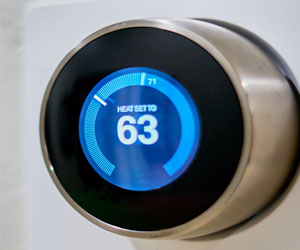


The Hidden Foundation Of Plant Vitality

Root health, while often overlooked, is a critical aspect of plant growth and overall plant vitality. The health of a plant's roots directly impacts its ability to absorb nutrients, water, and support the above-ground structures. In this article, we will explore the significance of root health, the factors that influence it, and the implications for plant growth and agriculture.
The Role Of Roots In Plant Health
Plant roots serve as the primary interface between the plant and its environment. They anchor the plant in the soil, absorb water and nutrients, and store food reserves. Healthy roots are essential for overall plant vigor and resilience against environmental stressors.
Factors Influencing Root Health
Several factors influence the health of plant roots:
Soil Conditions: Soil quality, structure, and composition significantly affect root health. Well-draining, aerated soil with an optimal balance of organic matter and nutrients is crucial for healthy root development.
Nutrient Availability: The availability of essential nutrients, such as nitrogen, phosphorus, and potassium, is essential for root growth. Imbalances or deficiencies can impede root health.
Water Management: Both under- and overwatering can harm roots. Consistent and appropriate watering practices are essential for root vitality.
Disease And Pests: Pathogens and pests can damage roots, leading to root rot or other diseases. Proper plant health management is crucial for preventing such issues.
Aeration: Oxygen is vital for root respiration. Compacted soil or waterlogged conditions can deprive roots of oxygen, leading to poor health.
Temperature And Climate: Extreme temperatures and environmental conditions can stress roots. Plants adapted to specific climates are more likely to have healthier roots.
Implications Of Root Health
Root health has far-reaching implications for plant growth, crop yield, and ecosystem stability:
Enhanced Nutrient Uptake: Healthy roots efficiently absorb essential nutrients, leading to better growth and crop production.
Drought Tolerance: Robust root systems improve a plant's ability to withstand periods of drought by accessing water from deeper soil layers.
Pest And Disease Resistance: Healthy roots are better equipped to defend against pathogens and pests.
Erosion Control: Plant roots stabilize soil and prevent erosion, preserving valuable topsoil.
Environmental Sustainability: A network of healthy roots contributes to ecosystem stability, enhances soil quality, and reduces the need for synthetic fertilizers and pesticides.
Cultivating Healthy Roots
To promote root health, gardeners and farmers can employ various strategies:
Soil Improvement: Regularly test and amend soil to ensure proper pH, nutrient levels, and structure.
Proper Watering: Water plants consistently and avoid overwatering, which can lead to root rot.
Crop Rotation: Alternating crops can help break pest and disease cycles, preserving root health.
Adequate Spacing: Planting with proper spacing ensures roots have room to grow without competition.
Pest Management:Implement integrated pest management (IPM) strategies to control pests and prevent root damage.
Root health is an often-underappreciated aspect of plant growth and vitality. A strong root system is the foundation for robust, productive plants and plays a pivotal role in ensuring the health of ecosystems and agricultural sustainability. By understanding the factors that influence root health and adopting best practices, we can enhance the resilience and productivity of the plants that underpin our food supply and the health of our environment.






Illuminating The Future Of Energy
 At the heart of solar technology is the photovoltaic (PV) cell, which converts sunlight into electricity. This process is accomplished through a series of interconnected steps:
At the heart of solar technology is the photovoltaic (PV) cell, which converts sunlight into electricity. This process is accomplished through a series of interconnected steps:
Photon Absorption: When sunlight hits the PV cell, it excites electrons in the semiconductor material. These semiconductors are typically made of silicon.
Electron Movement: The excited electrons move through the semiconductor material, creating an electric current. This movement of electrons is what we harness as electricity.
Inverter Conversion: The electric current generated by the PV cells is direct current (DC). However, most of our electrical devices and appliances operate on alternating current (AC). An inverter converts the DC to AC, making it compatible with standard household electricity.
Energy Storage (Optional): Excess energy generated during the day can be stored in batteries for later use, especially during the night or on cloudy days.
A Sustainable Solution For Water Scarcity
 The Importance Of Rainwater Conservation
The Importance Of Rainwater Conservation
Water scarcity is a pressing global concern that affects millions of people, ecosystems, and industries. Many regions of the world are already experiencing the detrimental effects of water shortages, which can lead to droughts, crop failures, and even conflicts over dwindling water resources. Rainwater conservation addresses this issue by harnessing a natural resource that often goes underutilized.
The Collection Process
Rainwater conservation typically begins with the collection of rainwater from rooftops, pavements, or other surfaces. This water, known as runoff, is channeled through gutters and downspouts into storage tanks or cisterns. The collected rainwater can then be filtered and treated to make it suitable for various non-potable uses, such as watering gardens, flushing toilets, and washing vehicles. In some cases, rainwater can even be purified for drinking, further reducing the demand on municipal water supplies.
Environmental Benefits
One of the primary advantages of rainwater conservation is its positive impact on the environment. By capturing rainwater, we reduce the burden on natural water sources, such as rivers and lakes. This, in turn, helps protect aquatic ecosystems and maintains their biodiversity. Moreover, rainwater harvesting reduces soil erosion and minimizes the risk of flooding, as it diverts rainwater away from stormwater drainage systems.
Economic Benefits
Rainwater conservation also provides significant economic benefits. By using rainwater for non-potable purposes, homeowners and businesses can reduce their water bills, resulting in cost savings.
A Smarter Way To Control Your Comfort
 Benefits Of Intelligent Thermostats
Benefits Of Intelligent Thermostats
Energy Efficiency: One of the primary benefits of intelligent thermostats is their ability to save energy and reduce utility costs. By learning your temperature preferences and adapting to your schedule, these devices can optimize heating and cooling, preventing unnecessary energy consumption.
Customized Comfort: Intelligent thermostats allow you to set personalized schedules and temperature preferences for different times of the day and week. You can ensure that your home is warm in the morning and cooler at night, all without manual adjustments.
Remote Control: Most intelligent thermostats are Wi-Fi enabled, giving you the power to control your home's temperature remotely through smartphone apps or web interfaces. This feature is especially useful when you're away from home and want to ensure it's comfortable upon your return.
Learning Capabilities: Over time, intelligent thermostats adapt to your lifestyle. They learn when you're typically at home and when you're not, making automatic adjustments to save energy without sacrificing your comfort.
Compatibility: These thermostats are often compatible with various heating and cooling systems, including traditional furnaces and air conditioners, heat pumps, and radiant floor systems.
Voice Control: Many intelligent thermostats are compatible with voice-activated virtual assistants like Amazon's Alexa or Google Assistant, allowing you to adjust the temperature with simple voice commands.
Data Insights: Intelligent thermostats provide data and insights about your energy usage, helping you make informed decisions to further reduce your energy consumption.
Balancing Rising Energy Demands
 The Growing Energy Demands
The Growing Energy Demands
The primary driver of escalating energy demands is population growth and urbanization, particularly in developing nations. As more people move to urban areas and access modern amenities, energy consumption naturally increases. In parallel, the proliferation of technology, from smartphones to electric vehicles, intensifies our need for electricity. In addition, industrial processes and manufacturing depend heavily on energy-intensive operations.
Energy Sources And Environmental Impact
The conventional sources of energy, such as coal, oil, and natural gas, have been the backbone of energy production for decades. However, their use has resulted in significant environmental consequences, including air pollution, greenhouse gas emissions, and habitat destruction. As a result, there is an increasing push for cleaner, more sustainable energy sources.
The Transition To Renewable Energy
Renewable energy sources, such as solar, wind, and hydropower, are being hailed as the answer to the environmental challenges associated with conventional energy sources. These renewables offer several advantages:
Clean Energy: Renewable sources produce little to no greenhouse gas emissions, reducing the negative impact on climate change.
Abundant And Sustainable: Sunlight, wind, and flowing water are nearly infinite resources, making them sustainable over the long term.
Energy Independence: By utilizing locally available renewables, countries can reduce their dependence on energy imports and enhance their energy security.
Technological Advancements: Ongoing advancements in renewable technology are making these sources more efficient and affordable.
The Key To Vitality
 The Significance Of Nutrient Absorption
The Significance Of Nutrient Absorption
Nutrient absorption is the bridge between the food we eat and the nutrients our bodies need to function optimally. It is crucial for maintaining health, supporting growth, and providing energy for daily activities. Without effective nutrient absorption, the body would struggle to obtain the vital elements required for various bodily functions.
The Digestive System's Role
The process of nutrient absorption begins in the digestive system, where food is broken down into smaller molecules through mechanical and chemical digestion. The small intestine, in particular, plays a central role in nutrient absorption. Its walls are lined with tiny finger-like projections called villi, which are covered in even smaller hair-like structures known as microvilli. These structures increase the surface area available for nutrient absorption.
Types Of Nutrients Absorbed
Several types of nutrients are absorbed during digestion, including:
Carbohydrates: Simple sugars like glucose are absorbed directly into the bloodstream.